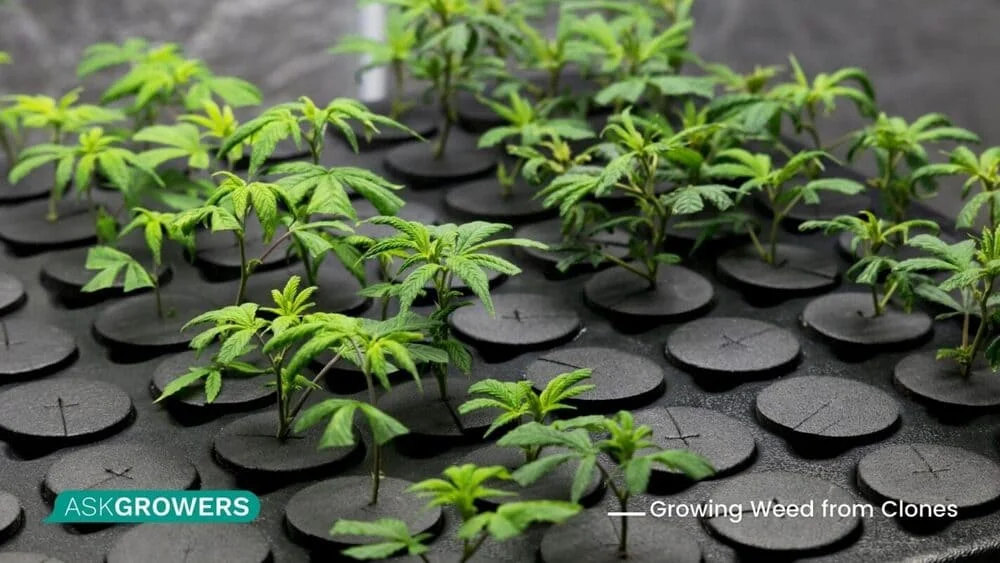Growing weed from clones is one of the growing methods that even laypersons can easily use. It is specifically meant to protect the genotype of the plant you use, giving you a unique chance to propagate new plants with a specific set of characteristics from a genetic isolate.
Let’s start with the definition. A cannabis clone is a cutting from an adult plant, a branch as a rule, which serves as a means for asexual vegetative propagation for growing new cannabis plants. This method works well with other plants, too, chosen in cases when you want to preserve the exact chemical profile of your adult plant. The method is prevalent in the cannabis growing industry because some growers manage to create CBD-rich or resin-rich strains that they want to continue growing further without the risk of properties’ degradation.
Materials Needed
So, what do you need to grow marijuana clones? Actually, the materials you will need are minimal, and there is no specific skill required for successful cloning. Even a simple plastic container will do if you know what you’re doing and choose the proper timing for the cutting procedure.
The things you need to get a cannabis clone are:
- The mother plant
- Knife or scissors
- The rooting accelerator
Both male and female plants can be cloned, though the male plant’s major utility is in breeding potential. You cut a healthy branch from the plant’s stem and put it into a separate container, feeding the cut with the rooting hormone to accelerate the process of root formation.
Why Clone Weed Plants?
Though growing a plant from seeds is preferable for many growers, the cloning approach has many benefits as well.
- You may be 100% confident that your plant is female, so it will give you a rich bud harvest. It’s very reassuring for growers hunting for the buds and not wishing to engage with breeding.
- You take all the guesswork out of the growing process, knowing what plant will eventually grow from the clone.
- Cultivation goes much quicker as the clone is already a plant; you don’t need to wait until it develops from a seed.
- Clones require less tedious care and have less stringent demands for the environment.
- Growing a clone from the beginning to the end is much easier than growing weed from seeds, so it is a method suitable for newbies.

Now let’s proceed to the practical part of how to clone cannabis plants.
The Clone Growing Procedure
Let’s go through the steps to growing weed starting from clones in detail.
- Prepare the supplies for making the cutting and planting the cut clone into the container.
- Choose the rooting medium, such as rock wool or special rooting cubes. You cannot place a fresh-cut branch into the soil; it will die without the proper conditions for rooting. Other options include an auto-cloner or an aeroponics system, which are costly but fit those who plan to clone many plants.
- Choose the mother plant in your garden according to quality criteria, such as a rich harvest, rich content of trichome, and a healthy stem that can withstand cutting without stress.
- Take care of the clones for 10-14 days, watering them and arranging high humidity for them, observing their root development. The clones will be ready for transplantation into soil containers in 2 weeks if everything goes well.
To maximize your chances for successful clone growing, you need to provide the proper propagation environment for your plant. Here are the basic conditions in which clones thrive and develop roots quicker:
- Diffused light
- High humidity above 90% RH
- The temperature range between 250C and 280C
Top Recommended Seeds for Growing
Conclusion
Now you have a complete guide on growing weed clones, and the procedure should not seem daunting or challenging to you. As you can see, this procedure doesn’t require any specific skills or botanical knowledge. So, if you’re lucky to grow a super-successful plant with much resin and excellent flavor and effect characteristics, it’s better to secure its chemical profile via cloning, enjoying the weed of the highest quality for years to come.
I bought a clone, now what?
After the purchase, inspect the clone and omit to plant sick, weak clones together with other plants. Ensure that the clone is free from pests and has a thick, healthy stem. Look for the visual cues of illness. Even if it looks healthy, you need to clean it with a diluted solution of a safe pesticide and put it in quarantine for a couple of days, observing how it adapts to your home's environment.
What about the roots of my clone? Are they okay?
Many users are cautioned about the rich web of adventitious roots that their clones form after the successful cloning procedure. This is the major difference between growing weed from seeds and clones. In the former case, the seed will form a tap root, which is a single, primary root of the plant. Clones don’t have a tap root as their rooting system forms with an already grown stem. So, don’t be surprised to see the fibrous root system; it’s a norm for a healthy cloned plant.



